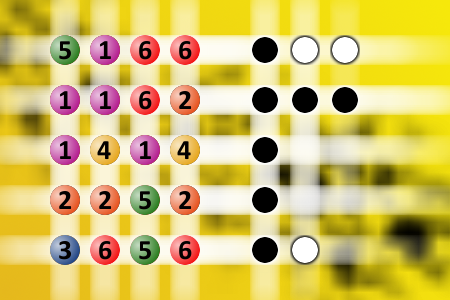What a winning combination?
The computer chose a secret code (sequence of 4 digits from 1 to 6). Your goal is to find that code. Black circles indicate the number of hits on the right spot. White circles indicate the number of hits on the wrong spot.Correct answers: 10
#brainteasers #mastermind

The Fourth of July was coming...
The Fourth of July was coming up, and the nursery school teacher took the opportunity to tell her class about patriotism. "We live in a great country," she said. "One of the things we should be happy about is that, in this country, we are all free."
One little boy came walking up to her from the back of the room. He stood with his hands on his hips and said, "I'm not free. I'm four."
One little boy came walking up to her from the back of the room. He stood with his hands on his hips and said, "I'm not free. I'm four."

